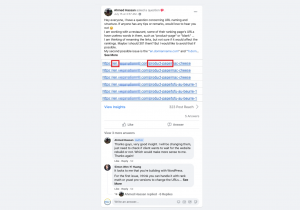
You’ve likely heard the statistic thrown around a bit – and that’s that 50% of small businesses fail in the first 5 years. As a start-up, you never want to become the failing end of that statistic, but what can you do to set yourself up for success? Part of that is going to be to develop a comprehensive strategy for business operations, processes and growth. Growth is the key here, because another interesting statistic is that scaling too fast, too soon is the number one reason most new companies fail. This is why a technology strategy that builds up as you grow is extremely important. While you want to maximize efficiency and be using the best technology out of the gate, investing your money into the wrong things too soon can set you up for failure. Here are a few of our best suggestions for formulating an IT strategy as a startup:
- Identify your workflow.
Probably the most important aspect of your business is going to be identifying your operational processes. From sales to customer to delivery – you need to sit down with an IT consultant and identify exactly what your workflow looks like. We outlined this a little bit in our last blog on start-up technology, but it’s important. Identify the workflow documentation that’s going to help your team be most efficient and then the hardware and network needs will fall into place from there.
- Analyze the core applications.
There’s no doubt that there are a number of core applications that will service your business in some way, no matter how innovative it is. Perhaps that’s Quickbooks, or a specific line of business application, or maybe you’re developing your own from scratch. This is the application that’s going to be at the heart of your business, and it’s important to take some time to analyze that application and understand how it fits into your workflow and how exactly you’ll build your processes and strategy around it. Depending on the nature of the application you choose, it will have different technology requirements. Is it a mobile application? Will it just be used on a single machine? On your sales staff’s teams? On every workstation in the office? These are the important questions that will give your IT consultant a better idea of how to create a strategy to this central application.
- Infrastructure
Once your business applications are picked out, you’ll have a better idea of more of your technology needs. Machine requirements, network setup and server hosting options will come after your workflow has been hashed out and core applications have been selected. You’ll be able to plan out which tools you’ll give your team on the road, in the office and how those tools will interact with each other as well as how to properly secure data while still ensuring access whenever it is needed.
- Long term plans
One of the things that most start-ups fail at is creating a long term strategy. While budget may not immediately be available to complete every technology purchase on your wish-list, your IT consultant can help you create a long term strategy to help you scale at your pace, without adding too many costs and at a sustainable rate.
Building a start-up no doubt overwhelming, but with a little diligent planning and a strategy in place – you can put the pieces together a really incredible IT strategy. Being strategic rather than piecemeal about your technology gives you predictable costs that are outlined (which investors love). If you’re a start-up struggling to figure out how to plan for your technology in the long term, be sure to reach out to a technology consultant that can help you.
Business & Finance Articles on Business 2 Community
(23)







